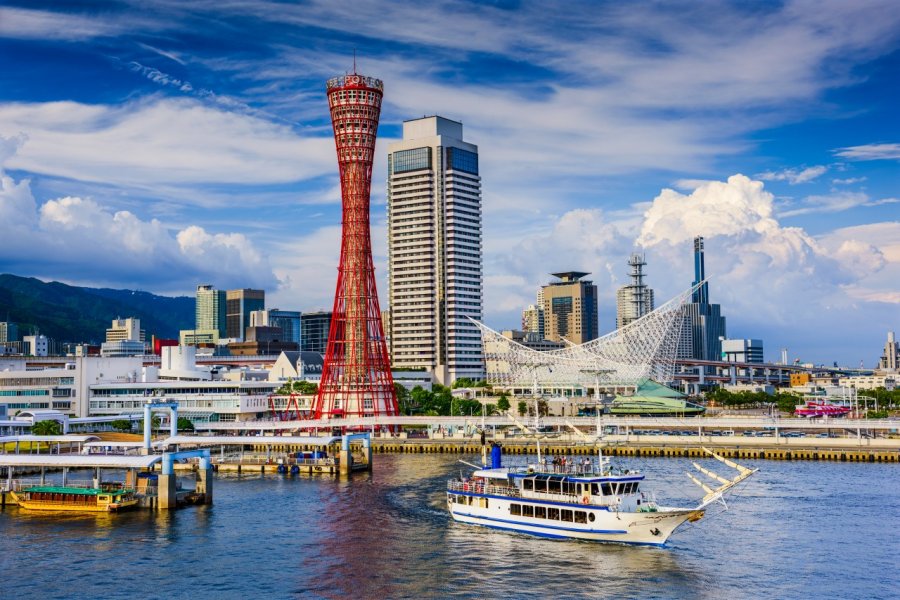Travel Guide Kobe
Find an accommodation
Advertising
On January 17, 1995 at 5:46 am, an earthquake destroyed part of the city of Kōbe, killing more than five thousand people. This earthquake took the Japanese at Kōbe by surprise. First of all, we were not expecting an earthquake in this area at all. Then, huge elevated highway structures fell due to the fatigue of the civil engineering foundations that supported them, and the fire spread at a blistering rate. Even solid concrete buildings have turned into flares. The very few wooden houses built before the Second World War survived. The city was rebuilt in the bitterness of the survivors who lost their families. It has reinvested in the same site, and was built on the hills that overlook the sea. Its history gives it a cosmopolitan touch that it has cultivated for several centuries. The port of Kōbe (1,500,000 inhabitants) is connected to Ōsaka, located 32 kilometres to the southwest, by an uninterrupted industrial conurbation. History. Kōbe remained a small fishing port until the 12th century. In 1157, Kiyomori Taira (1118-1181) developed it as a commercial port after building his castle in Fukuhara. Then, in 1183, the Minamoto clan besieged the castle and drove out the Tairas. In 1336, the port was the scene of the Minatogawa war between Takauji Ashikaga's troops and those of Yoshisada Masashige. Ashikaga won this battle at Kōbe, entered as a winner at Kyōto and imposed the emperor Kōmyō after having established his bakufu in the Muromachi district. Meanwhile, the rival port of Kōbe, Hyōgo, was only growing. It was not until 1867 that a naval school was created that would allow it to be included in the list of ports suitable for international trade. From then on, the city would experience a dazzling expansion. In a few years, Kōbe would supplant its rival Hyōgo. The port was supported by the Governor, Hirobumi Itō, then Prime Minister of the Meiji Government. A concession was reserved for foreigners who came to settle around the city, below the Rokkō mountains. At the end of the 19th century, Kōbe was a prosperous city, in a magnificent site, the high hills overlooking the sea where junks sailed. During the Russo-Japanese war and the war against China, the port's activities intensified. Its expansion led to the decision to create the world's largest artificial island, Port Island, which was completed in 1982. On January 17, 1995, as highway bridges broke, port facilities collapsed and 100,000 homes and buildings collapsed, Kōbe regained the nightmare of the last war during which bombardments destroyed two thirds of the city. As in Hiroshima, Japan, we do not talk about the misfortunes of history, we seek to live them and exploit them positively.
What to visit Kobe?
Advertising
Weather at the moment
Advertising
Organize your trip with our partners Kobe
Transportation
Book your plane tickets
Car Rental
Boat rental
Accommodation & stays
Find a hotel
Holiday rental
Find your campsite
Tailor-made trip
Immersion travel
Services / On site
Activities & visits
Find a doctor
Find unique Stay Offers with our Partners
Pictures and images Kobe
Other destinations nearby Kobe
5 km away
25 km away
100 km away







